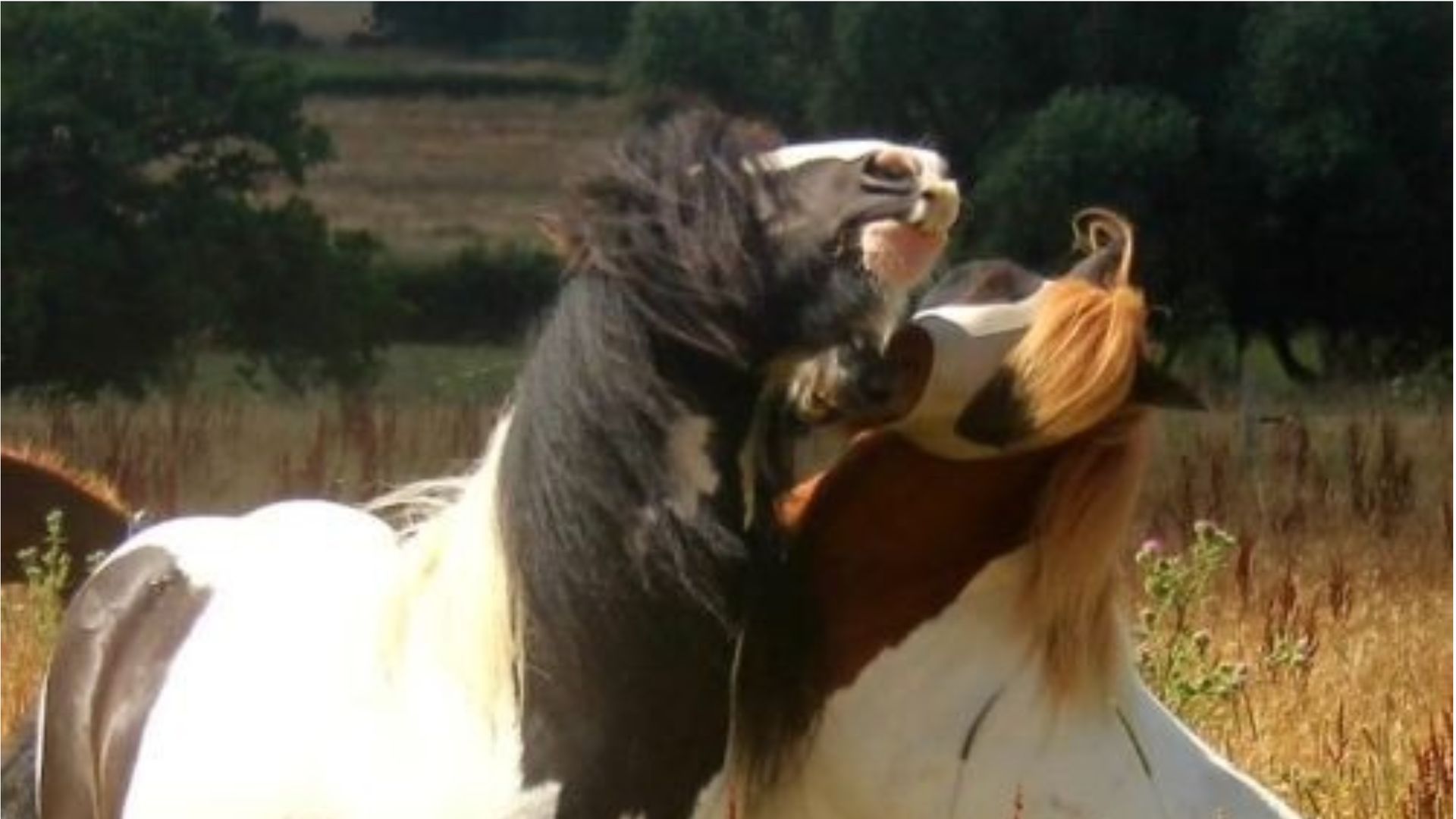Spring Grass and Metabolic Mayhem – understanding EMS & IR
How to support your horse’s metabolic health through smart, simple changes this season
And so it begins – the great green grass explosion of spring. But while it may look lush and lovely to us, for many horses it spells metabolic mayhem.
Enter Equine Metabolic Syndrome (EMS) and Insulin Resistance (IR) – two common conditions that are fast becoming the poster features for modern equine health challenges. And the tricky part? They’re the result of a disconnect between our horse’s ancient physiology and today’s rich, sugar-laden pastures.
But here’s the good news: with the right knowledge and a few targeted strategies, there’s so much we can do to help our EMS horses thrive.
EMS and IR – more than just a weight issue
EMS and IR are often misunderstood as conditions affecting only overweight horses. In truth, they’re much more than that – they represent a deeper metabolic imbalance that disrupts the horse’s endocrine system. Think of it like a metabolic traffic jam, with insulin – the hormone that manages glucose – getting less and less effective at doing its job.
The result? The pancreas pumps out more insulin to compensate, leading to high insulin and glucose levels in the bloodstream. Over time, this can trigger a cascade of health issues – with laminitis being one of the most serious red flags.
Signs like fat pads, a cresty neck, or hoof sensitivity aren’t just cosmetic – they’re the tip of a much deeper iceberg. But the earlier we spot them, the more we can do to help.
Why modern grass is a metabolic misfit
Our horses evolved to graze sparse, fibrous forage across vast landscapes. What they didn’t evolve for? Standing in a small paddock munching on neon-green grass bursting with simple sugars and starches. Please don't think for one minute I'm criticising those who are on livery yards doing this very thing - I'm in the same boat. Once very happy renting 7-acres with our own shelters, mud slabs, cobbled together track system and hay stations, we were then invaded by travellers and had to get out quick. Of course a track system yard would have been the solution but we're not all lucky enough to live near one, and I couldn't be more grateful to the lovely team at our livery yard who took us in on the spot.
Thing is, today’s UK grasslands are rich, fertile – and problematic. They provide more energy than most horses need, especially those in light work or on restricted exercise. Add in limited movement, and we’ve got a recipe for carb overload in horses whose bodies simply can’t cope with it.
We call this ‘carb intolerance’ – and managing it means doing all we can to mimic the low-sugar, high-fibre grazing patterns nature intended.
Three smart strategies that make a big difference
I’ve walked this same path myself. My own metabolic challenges with my horses started in 2001 with my then 7yo Connemara, Murphy, who was immediately diagnosed with IR. A few years later we took on our much cherished gypsy cob pony, Cookie, who came to us with a crest the size of a small country (she was later diagnosed with Cushing’s aged 14). Finally, cut to 2017 when we adopted MacAttack, a once semi-feral cresty thug turned metabolic-management success.
Here’s what I’ve learned over the years:
🌿 Forage first – No surprise - grass intake needs careful control. Prioritise quality high-fibre hay over the neon-green, and a feedbowl carrier such as meadow grass cobs. We all know that soaking hay can help reduce sugars, but no more than 1-hour tops, and make sure to rinse thoroughly – the soaking liquor is toxic and shouldn’t go down the drain, so expecting your horse to ingest it on his valuable fibre source is asking for trouble. Equally, slow feeders below chest height are excellent for mimicking natural grazing.
🌿 Lifestyle adjustments – Movement is key for metabolic horses. Gentle, regular exercise improves insulin sensitivity and helps with weight management. A simple electric-post track system, or strategically placed hay stations can encourage natural movement. Grazing muzzles can help too – unless you’ve got a MacAttack who houdini-d his way out of his within 5-minutes and hung it very neatly on a nearby branch.
🌿 Targeted nutrition – Support your horse with a balanced mineral supplement to address the well-known deficiencies in our UK forage. And don’t overlook leptin resistance – a common issue in EMS/IR horses. Acetyl L-Carnitine (Alcar) can be a powerful ally here, helping to regulate appetite and support more effective metabolic balance.
The big picture – support, not struggle
Managing EMS and IR can feel daunting at first – but it doesn’t have to be overwhelming. It’s not about perfection; it’s about progress. With patience, a few smart strategies, and a willingness to work with your horse’s biology instead of against it, metabolic health becomes something entirely manageable.
Our horses may live in a modern world, but their bodies are still wired for the wild. When we understand that – and adapt accordingly – we can make a world of difference to their health, comfort, and happiness.
We’ve got this.
👉 Explore our full EMS/IR support page.










